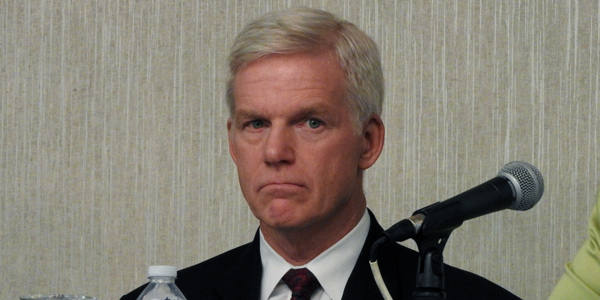By Rory D. Sweeney
VALLEY FORGE, Pa. — While stakeholders remain divided on changes to PJM’s Incremental Auctions, hope remains for reaching a compromise that can be implemented in time for next year’s Base Residual Auction. (See Consensus Fades on PJM Incremental Auction Solution.)
Stakeholders at Tuesday’s meeting of the Incremental Auction Senior Task Force defined where they will and will not budge on their positions. The three main sticking points are the number of IAs per delivery year, at what price PJM should sell excess capacity and what to do about excess commitment credits (ECCs).
Number of Auctions

Stakeholders appear closest to consensus and willing to negotiate regarding the number of auctions. PJM’s Brian Chmielewski presented the results of a recent poll that found more than two-thirds of voters strongly supported the status quo of an IA for each of the three years between the BRA and the delivery year.
However, most respondents were willing to consider proposals to reduce the number to two. A majority of voters were neutral about an option to have PJM sell capacity in either IA, with 41% opposed. A proposal to limit PJM to selling capacity in the final IA was strongly supported by 38% and opposed by 44%, with 18% neutral.
James Wilson of Wilson Energy Economics, a consultant to consumer advocates for several PJM states, said there’s no reason to reduce the number of IAs, but reducing to two could be acceptable. Carl Johnson, who represents the PJM Public Power Coalition, agreed that his membership was “not willing to fall on our sword” over the issue.
Sell-Back Price
Stakeholders remain divided over the sell-back pricing approach. PJM’s Jeff Bastian argued that the price must be at least what the RTO paid for it in the BRA. “If I’m going to excuse someone from a BRA commitment, why should I pay them?” he asked.
Calpine’s David “Scarp” Scarpignato agreed it must be at “or close to” the BRA price. It is a position on which “we can’t move,” he said.
Wilson and Jeff Whitehead of GT Power Group argued PJM should sell for whatever the market will bear. “You may sell some capacity [at the BRA price], but you’re basically pricing yourself out of the market,” Whitehead said.
PJM’s position “doesn’t make much sense,” Wilson said, because the capacity is not as valuable in the IA if the load forecast has been reduced following the BRA. He has argued that PJM needs more accurate load forecasts prior to the BRA.
Bastian later floated an idea that was developed during a meeting break to allow market participants out of their capacity obligations but not excuse them from the daily capacity-shortfall penalties, which equal 120% of the capacity payments. Wilson and Adrien Ford of Old Dominion Electric Cooperative pointed out that the idea is analogous to selling the capacity at the BRA clearing price. Bastian agreed, adding, “you’d have a cleaner settlement report.”
EnerNOC’s Katie Guerry was concerned the idea would reduce liquidity in the IAs because those with capacity obligations could walk away and decide they “won’t even bother” attempting to replace them in the IAs.
Whitehead said the IAs would have to clear above the BRA price for load to benefit. “I think, mathematically, load is better off under what [Bastian] just described,” Whitehead said.
Split over Excess Commitments

Stakeholders were also split on what to do with ECCs, which are allocated to load-serving entities when reliability requirements decrease below commitments. Currently, LSEs can use ECCs to replace resource commitments. Load has proposed eliminating the ECCs so that the excess committed megawatts, if not otherwise sold in an IA, are retained. The proposal also removes an opportunity for market participants to bypass the intent of any new IA sellback-pricing approach, Susan Bruce, who represents the PJM Industrial Customer Coalition, told RTO Insider in an email.
Johnson said public power organizations “feel entitled” to the ECCs and find them “helpful” for covering EFORd (equivalent forced outage rate – demand) deficiencies while adhering to their business models. As nonprofit entities, public power has a “distaste” for “making money” on the commitments by selling them back, Johnson said. Ford said she agreed with Johnson.
Guerry said that LSEs incur costs to secure commitments. “It’s not all necessarily profit” when they are sold back, she said.
Bruce said she “can appreciate [public power’s] perspective when you have self-supply obligations,” but that “load is getting the short end of the stick.” She also questioned how auditable ECCs would be if customers attempted to negotiate for their proportionate share of them in a retail transaction. She acknowledged some “wiggle room here” to negotiate a different solution but said the “status quo is not an option from a load perspective.”
Chmielewski asked stakeholders to develop new proposals for the task force’s next meeting on Nov. 10.
The IASTF is also charged with resolving a second problem statement and issue charge on the potential for profiting off of replacement capacity. Chmielewski said the issue will be a focus of the next meeting as well. (See “Stakeholders Quibble with, but Eventually Endorse, Replacement Capacity Investigation,” PJM Markets and Reliability and Members Committees Briefs.)
To get the proposals implemented in time for the next BRA in May, they will need to be presented at the January meeting of the Markets and Reliability Committee, he said.







